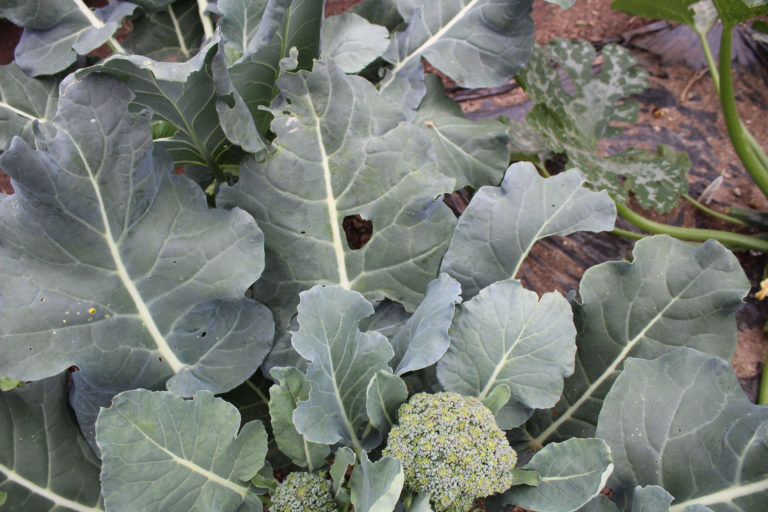Broccoli
Selection and Planting
Broccoli Varieties
Broccoli varieties differ in two main ways: speed of maturity and the temperatures in which they grow.
When picking broccoli plants, first determine how much space you’d like to dedicate and how long the plants will be able to grow. Some people will grow early maturing varieties in the spring and then replace them with those that grow through the summer and mature in the fall. You will definitely be able to find a variety to suit your needs.
Planting
Because the growing season at Rose Tree Gardens is shorter, it is recommended to transplant broccoli into the garden. Healthy transplants purchased from reputable garden centers or grown under lights from seed. If you are new to gardening, do not try growing plants from seed.
Transplant broccoli plants should be spaced 14 inches apart in rows 24 inches apart. This may vary based on your particular variety so consult your seed package or plant tag for the final spacing.
Growing Broccoli
Pests
Broccoli is susceptible to a variety of pests, but extensive insect damage in Rose Tree Garden is not common. A list of pests seen at the garden is shown below.
Diseases
Growing broccoli at Rose Tree Garden is relatively easy when considering at potential diseases. Even though broccoli diseases aren’t common, the use of cultural practices like those listed below will help keep your plants healthy and productive.
- Plant spacing: Broccoli plants that are positioned too close together will result in higher levels of humidity near the leaves due to air not being able to move between the plants. Making sure to give plants plenty of space will improve airflow and reduce the likelihood of disease
- Watering: Never water your plants by spraying the leaves. If spraying the leaves is unavoidable, water in the morning so the sun can quickly dry the water on the leaves.
- Crop rotation: A number of plant diseases come from a slow buildup in the soil over a period of time. Crop rotation (not growing plants in the same place every year) will keep the amount of soil disease low. Every year, move your plants to a different part of your garden that hasn’t hosted broccoli for the past 3 years.
Watering
Maintaining consistent soil moisture levels will improve plant growth. Monitor both the soil moisture and rainfall using the Rose Tree Garden Weather Data and water your plants when soil moisture decreases or the garden has not received at least 1″ of rainfall in the past week.
When watering, be sure to avoid overhead sprinkling as this increases the likelihood of soil-borne diseases spreading to the plant. Water slowly at the base of the plant over a period of an hour to encourage deep root growth. Long and infrequent watering encourages the plant to focus on root development which will enable it to survive through periods of drought.
Weed Control
Keep area under broccoli plants clear of weeds to prevent competition. Use a garden hoe or hand pulling to remove the weeds. Reduce the weed pressure by following our Weed Prevention suggestions.
Harvesting
Monitor your broccoli plants and look for when the head reaches a descent size and while the flowers are still tight and haven’t started opening. Cut the head off the plant but leave the plant if your variety is known for forming supplemental broccoli heads along the stem, known as side shoots. Try to pick broccoli heads in the morning when the weather is cool for a sweeter and less bitter harvest.
If you wait too long and the individual flowers begin opening, immediately cut the head and consume. The longer you wait, the more bitter the harvest will become.

